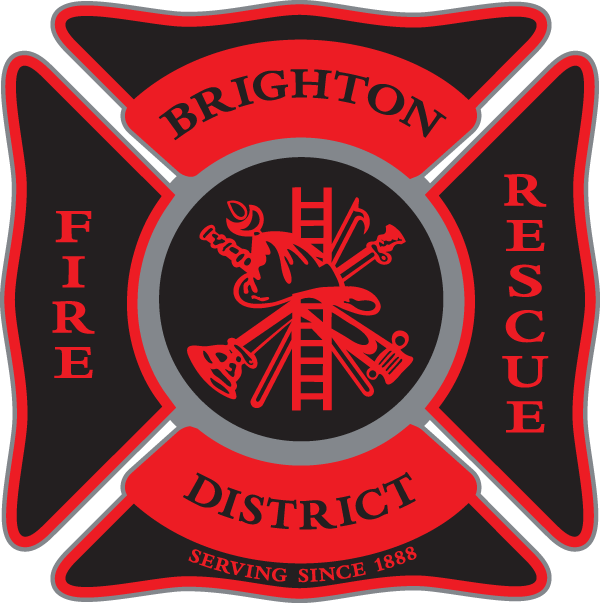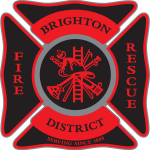Fire Prevention Division
The Prevention Division is responsible for identifying fire and life safety risks within the community and applying safety measures to help reduce or eliminate those risks. The Division does this through the programs listed below:
- Providing education programs for adults and children that help promote fire and life safety through; car seat checks, story time at the firehouse, cooking safety demonstrations at our high schools, community CPR classes, fire extinguisher training, youth firesetter intervention screenings and fire prevention month activities in October.
- Conducting plan review for new construction
- Reviewing and issuing permits for open burning and other events that present a fire risk
- Conducting fire safety inspections of community businesses and occupancies within the fire districts service area to help reduce and or eliminate fire and life safety risks. To request a fire inspection from Brighton Fire Rescue District please email us at: inspections@brightonfire.org
- Conducting fire investigations to determine a fires origin, cause and circumstance
Fire and Life Safety Tips
Cooking remains a leading cause of residential fires and fire casualties.
Here are some cooking fire safety tips:
- Keep an eye on what you’re cooking- don’t leave cooking unattended.
- Keep your cooking areas clean and clear of combustibles (potholders, food packaging, towels, etc.) and wipe up surface spills.
- Create a three-foot kid and pet free zone around the stove.
- Older children should only cook with permission and under the supervision of an adult.
- Have a lid or cookie sheet within reach while cooking (to smother flames) in case of a fire.
Safety tips for if a cooking fire does start:
- Put a lid on it! Slide a lid over the pan (from the side) and then turn off the burner.
- Don’t move the pan until the fire is completely extinguished and cooled, and don’t try to transfer the pan to the sink.
If you cannot extinguish the fire:
- Get you and your family safely out of the house.
- If you can, close doors as you are escaping, to help contain the fire.
- Call 911 from a safe place (outside).
Carbon monoxide (CO) is a gas, it has no odor and is often referred to as the "invisible killer". Carbon monoxide can make a person feel sick and can be deadly. In the home, heating and cooking devices that burn fuel can be sources of carbon monoxide.
- CO alarms should be installed outside each sleeping area. Install alarms on every level of the home. It is best to use interconnected alarms. When one sounds, all CO alarms in the home sound.
- Follow the instructions on the package to properly install the CO alarm.
- Test CO alarms at least once a month.
- Replace CO alarms according to the instructions on the package.
- Know the sounds the CO alarm makes. It will sound if CO is detected. It will make a different sound If the battery is low, replace it.
- If the CO alarm sounds, you must get fresh air. Move outdoors, by an open window or near an open door. Make sure everyone in the home gets to fresh air. Call the fire department from a fresh air location. Stay there until help arrives.
- When warming a vehicle, move it out of the garage. Do not run a fueled engine indoors, even if garage doors are open. Make sure the exhaust pipe of a running vehicle is not blocked. Clear snow away from the exhaust pipe.
- During and after a snowstorm, make sure vents for the dryer, furnace, stove and fireplace are clear of snow build-up.
- Clear all debris from dryer, furnace, stove, and fireplace vents.
- A generator should be used outdoors. Use in a well-ventilated location away from windows, doors, and vent openings.
- Gas or charcoal grills can produce CO. Only use them outside.
- Have heating equipment and chimneys inspected by a professional every year before cold weather sets in.
- Open the damper when using a fireplace for adequate ventilation.
- Never use your oven or stove to heat your home.
For more information visit: www.nfpa.org/education
- CO alarms should be installed outside each sleeping area. Install alarms on every level of the home. It is best to use interconnected alarms. When one sounds, all CO alarms in the home sound.
- Follow the instructions on the package to properly install the CO alarm.
- Test CO alarms at least once a month.
- Replace CO alarms according to the instructions on the package.
- Know the sounds the CO alarm makes. It will sound if CO is detected. It will make a different sound If the battery is low, replace it.
- If the CO alarm sounds, you must get fresh air. Move outdoors, by an open window or near an open door. Make sure everyone in the home gets to fresh air. Call the fire department from a fresh air location. Stay there until help arrives.
Anytime is a great time to create and practice your home escape plan. This plan should include a map of your home showing all the doors and windows. You need to know at least two ways out of your house in case your normal escape route is blocked. Have an outside meeting place that's a safe distance from the house where everyone will meet so you can make sure everyone got out of the house safely. Finally...practice, practice, practice. You need to practice your evacuation at least twice a year. If you have questions regarding home escape plans please email us at inspections@brightonfire.org
In Colorado winter temperatures can be extremely cold. Space heaters and other heating appliances are a leading cause of fires in the home. Be safe this winter and follow these safety tips from the National Fire Protection Association.
https://www.youtube.com/watch?v=jS5xGfRO-Tw&list=UL67MaL-qOAOY&index=460
Brighton Fire Rescue requires a Knox Box on any building that has a fire sprinkler system or a fire alarm system.
To order a Knox Box or other Knox Company product, please go to www.knoxbox.com.
The easiest and most efficient way to complete your Knox order is online. We have provided a “How To” guide and a "whats right for you" guide that you can access.
Please email us with any questions you may have at inspections@brightonfire.org.
Permits and Regulations
Learn about Permits and Regulations with the Brighton Fire Rescue District

